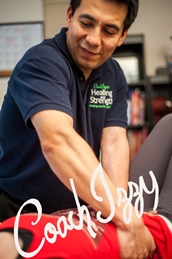We think of physical exercise as an essential component of overall health with well-documented benefits on stress control, weight management, sports performance, and rehabilitation. While there’s truth to this, it’s not the whole truth.
On the one hand, exercise is a key component in the rehabilitation and prevention of specific conditions. There’s ample evidence—empirical and documented—of patients overcoming debilitating dysfunctions thanks to the guidance of an exercise professional.

But on the other hand, exercise may also aggravate or perpetuate a dysfunction. Just like there are those for whom exercises proved healing, there are also those for whom exercise did nothing or exacerbated their conditions.
Does this mean that exercise during the healing stages is dangerous? Or is it really necessary to achieve long term recovery and health?
The answer depends on how we interpret exercise.
Much of what accept about exercise bears an emotional context (i.e. good exercises vs. bad exercises, functional vs. nonfunctional, etc.) or derive from partial observations turning into hotly-debated concepts (like stretching, engaging the core, activating the glutes, etc.). Add to this the general belief that exercise is primarily a function of muscles contracting and we can see why we have difficulty understanding why in some cases exercise enhances the healing process or why in some cases it disrupts it.
The Disclaimer
This is not an endorsement or denouncement of any exercise approaches but rather, an invitation to analyze exercise from its multiple perspectives, not just the musculoskeletal realm. That means that we may have to expand, or even reevaluate, what we understand as exercise.
What is Exercise?
The popular concept of exercise is a conglomerate of passionate expressions. “It’s good for you,” they say. “It’s a vital component of health.”
That is true but it doesn’t tell us what makes an exercise an exercise. To do this, we must strip all emotions off the concept and see it in its raw components. If you asked me how I define exercise, I’d say:
Exercise is the execution of an outcome-oriented motor pattern designed to achieve an immediate or long-term goal or intention.
The key word is intention but only when used as a synonym of a practical, executable goal rather than wishful thinking. Let’s put it in a practical example.
Let’s say you’re recovering from a shoulder injury and now want to enhance your healing via exercise. Here’s how you’d proceed:

If your selected motor pattern, or exercise, helps you strengthen your shoulder—thus enhancing your healing—then congratulations! The intention met its goal and that’s what we all seek. Incidentally, the ability of an exercise to satisfy its specific intention is what makes it functional—regardless of the modality or implement used. I’ll elaborate more in future articles.
In the hands of a well-trained exercise professional, intention is the foundation of an exercise program that leads to healing with safety and efficiency. But often, even the best designed exercise program finds stumbling blocks. This happens when intentions are incongruent with another important factor: Relevancy.
And relevancy is what we discuss in the next installment of this three-part series.
Until next time, may you enjoy a fit and pain-free life!
